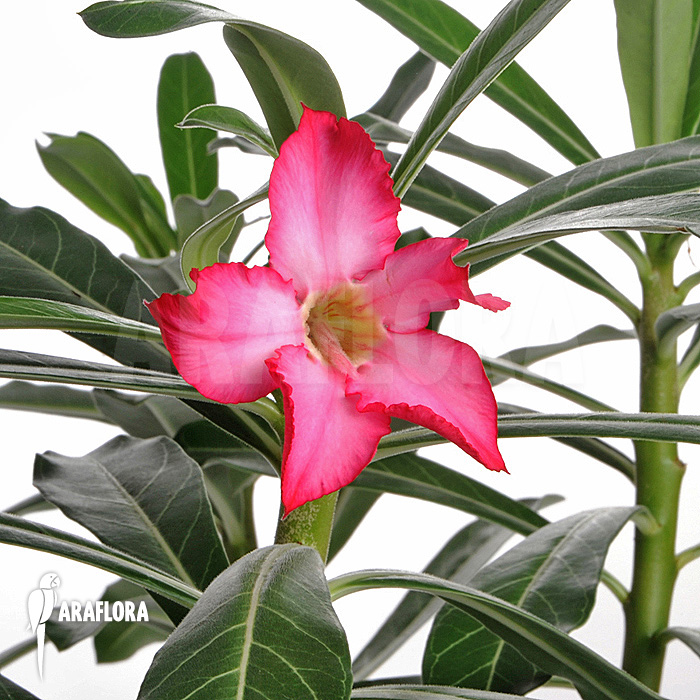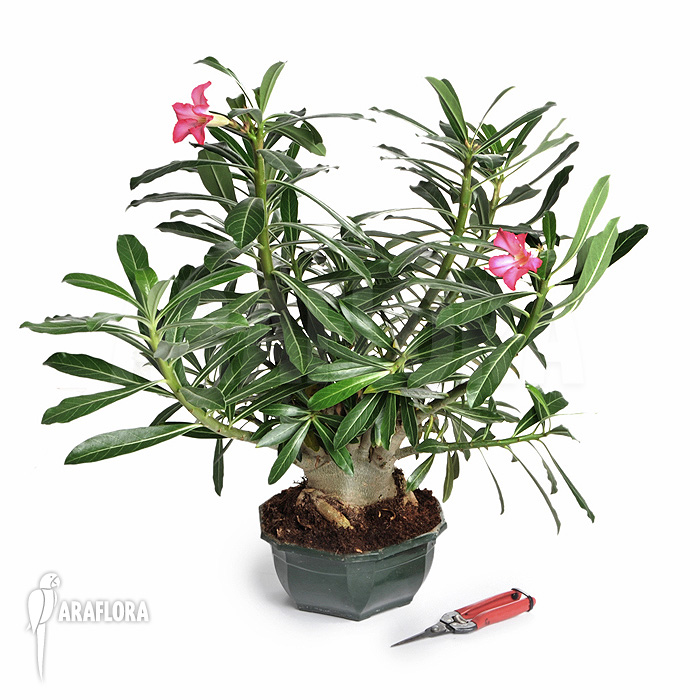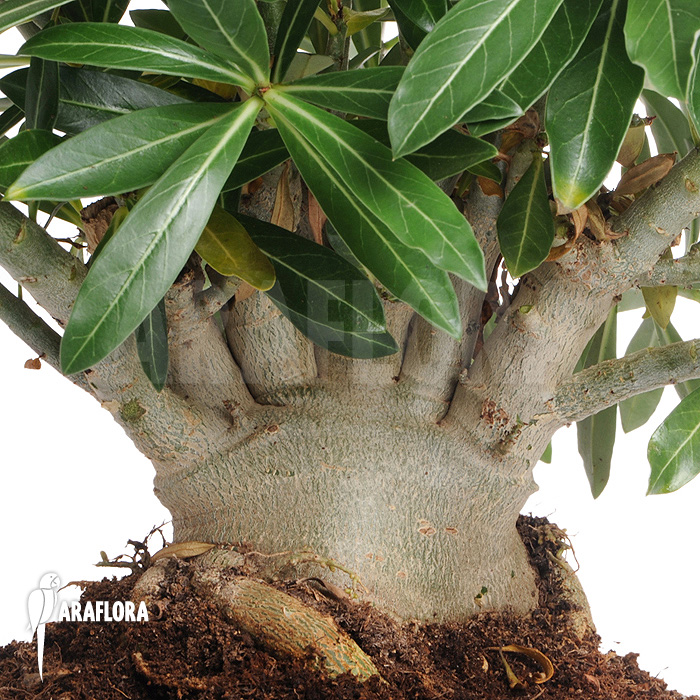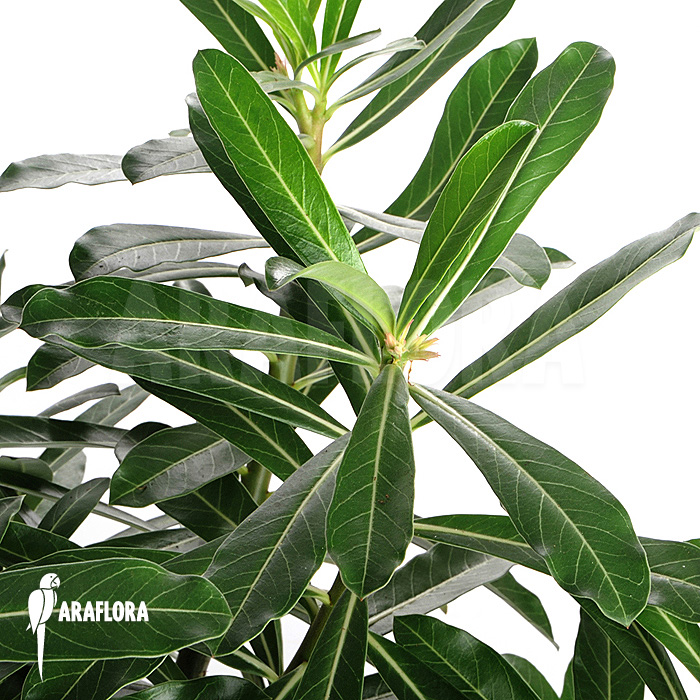Adenium obesum - SuCa01
Adenium obesum - SuCa01
The desert rose is indigenous to the southern side of the Sahara. Therefore the Adenium obesum is, as the name suggests, a very resistant species. It is fairly easy to maintain the desert rose in a bonsai format. Due to its compact size, with thick trunk and firm leaves, the plant has a beautiful appearance. Moreover, when Adenium obesum blooms, it has beautiful large pink flowers.
Currently not in stock
€ 24,35
Keep me up to date?
Araflora will inform you as soon as the product is available again. Please fill in your e-mail address and we will let you know as soon as the product is back in stock. You will get an e-mail message when the product is available again. Unfortunately we cannot say how long this will be or what the price is likely to be.

Receive an e-mail when new stock of this plant arrives.
Share this plant? Press on one of the following icons.
Adenium obesum is found in the wild mainly in southern Africa. The plant thrives well in a dry and fairly hard environment. This makes the desert rose an extremely suitable plant for dry terrariums with a sandy bottom. In addition, Adenium obesum will also come into its own in the living room. The desert rose, which looks a lot like the oleander, can grow to more than a meter. The species developed bright pink petals, which appear white closer to the base. The leaves are dark green, fairly thin and have a succulent plant-like character.


The name "desert rose" provides a good indication of how the species should be cared for. Adenium obesum has almost the same needs as many cacti. As a result, the plant needs a lot of sunlight. It is advisable to put the desert rose in front of a south window. If kept in partial shade the Adenium obesum will grow more slowly and flower more irregularly. During flowering, the desert rose prefers a temperature of around 25°C, but room temperature will also suffice. It is possible to keep Adenium obesum at a constant temperature all year round, or to give it a winter rest at a temperature of 15°C between October and March. In the first case, the plant retains its leaves throughout the year, unlike the winter rest in which the desert rose loses its leaves. Normally you water the plant when the soil feels dried out. The plant needs a very limited amount of water during the rest period. It is easy to prune the plant if it becomes too large, or if you want to maintain it as a bonsai.








 10 cm
10 cm
 5 cm
5 cm












